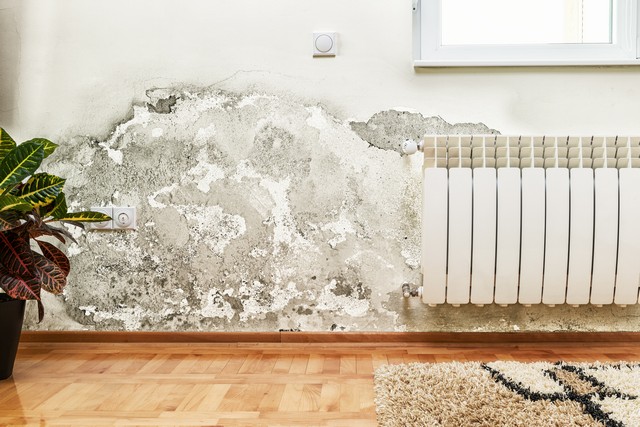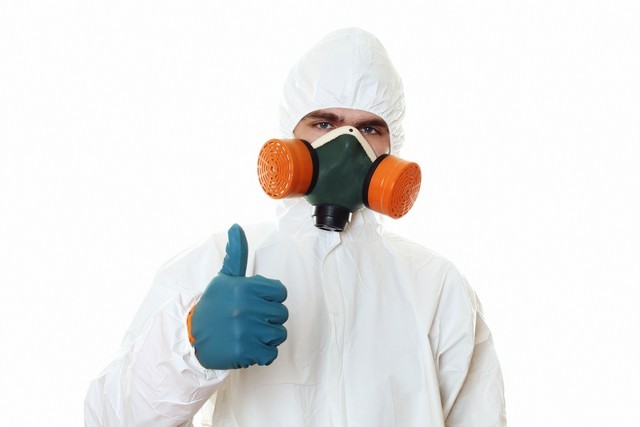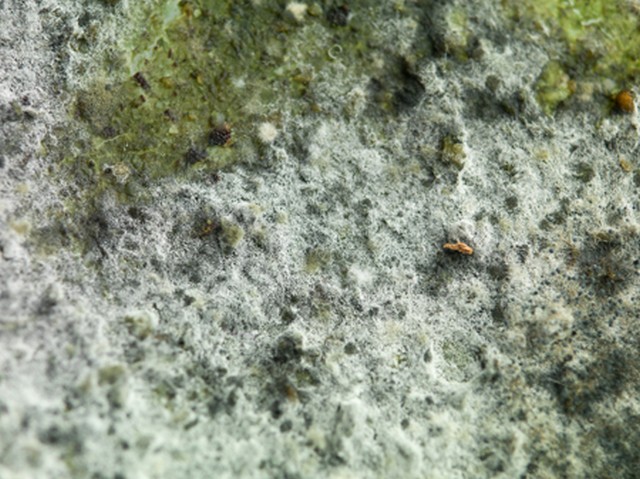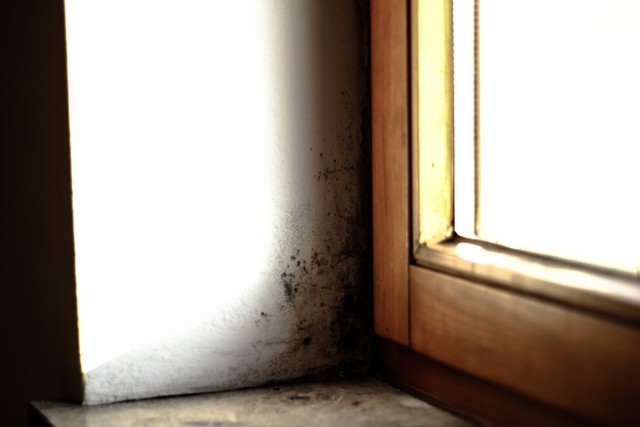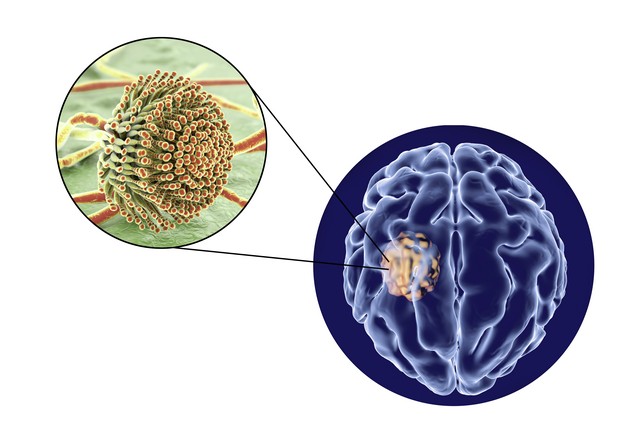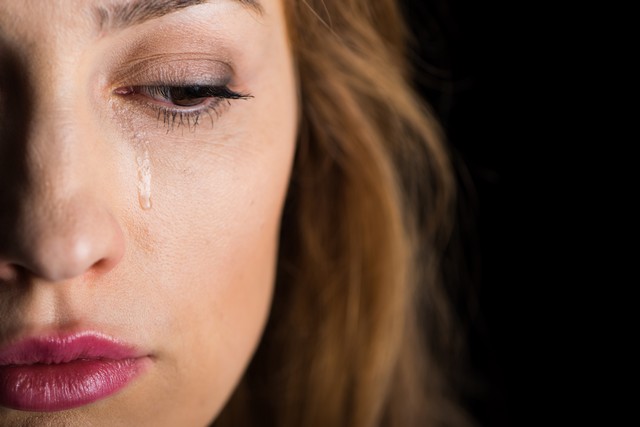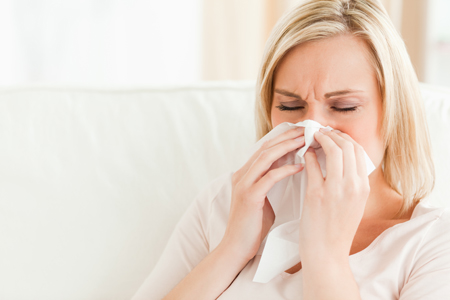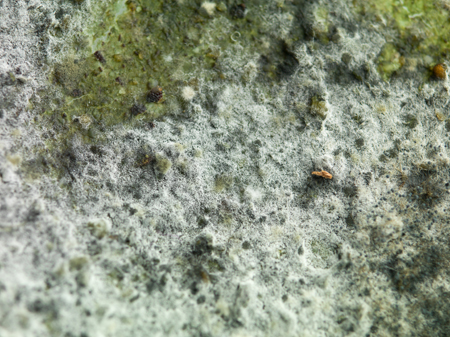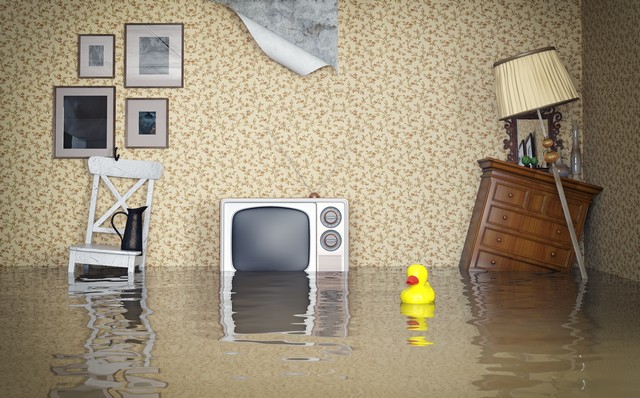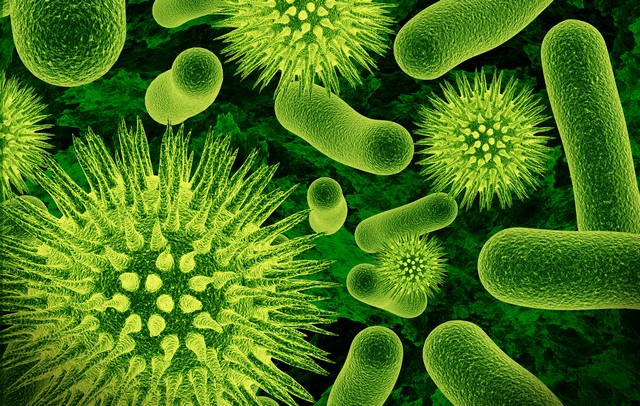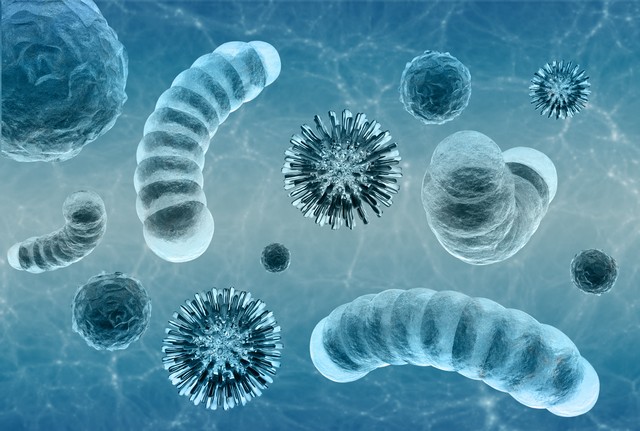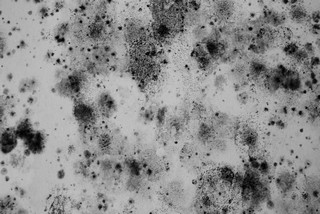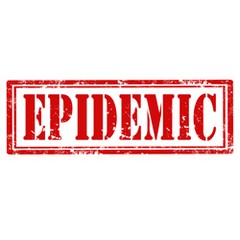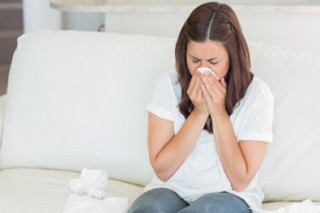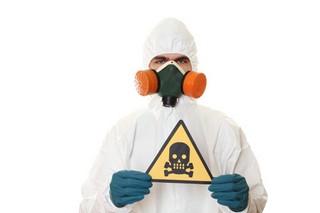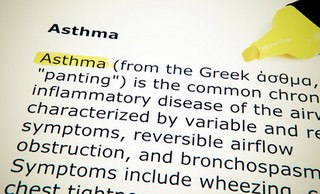
by Eric Brown | Jan 3, 2019 | Attic Mold, Basement Mold, black mold removal Atlanta, black mold removal Georgia, Bleach and Mold, Commercial Mold Remediation, Commercial Mold Removal, Crawlspace Mold, Dead Mold Spores, Health, Homeowner Tips, Mold Facts, Mold Information, Mold Inspection, Mold Remediation, Mold Removal, Mold Removal Alpharetta GA, Mold Removal Atlanta GA, Mold Removal Cost, Questions and Answers
Got Mold? Call Mold B Gone, 470-545-4467!

Got Mold? Call Mold B Gone, 470-545-4467!
One of the challenges facing consumers that have mold is determining how to get it removed properly. Often Mold B Gone is called by consumers who hired a mold removal company that did not do the job properly the first time and actually made the problem worse. Be aware of any mold removal company that is unwilling to provide references, evidence of training, a detailed scope of work, recommends spraying bleach, and does not build containment to prevent cross contamination.
As a consumer, you need to understand that mold removal is a profession. Experienced mold removal contractors, like Mold B Gone, have training and understand that the first step to preventing mold is to first identify the cause of the mold growth, which is inevitably caused by excess moisture. The first step is to fix the moisture issue, then tackle the mold problem. There are 8 specific steps that mold removal professionals follow to ensure that the indoor air quality of your home or business becomes healthy. Mold removal is often called mold remediation because well trained contractors understand and implement the 8 steps necessary to restore the indoor air to healthy levels.
The purpose of this article is to outline why you need to hire a professional when you do find mold that needs to be removed.
Only Hire Professional Contractors To Remove Mold!

Only Hire Professional Contractors To Remove Mold!
One of the biggest concerns that most home owners have pertains to the cost of mold removal.
Because of the expense that mold removal poses, the human tendency is to try to find the best deal. However, be wary of contractors or friends that offer to remove your mold, particularly if they have no training or experience.
Do not fall for the sales pitch or claims that mold can be remediated with ozone or other types of machines that kill mold.
Another potential claim made by some removal companies is that they can just fog your home or spray a bunch of chemicals and the mold will magically disappear.
Contractors that offer these types of solutions are not professionals because they are just trying to kill the mold, which as we explained in a previous article, is not a proper method for long term mold removal.
Get Educated About Mold!
One of the reasons we post articles about mold is to educate our readers; an informed consumer is able to make better choices.
Mold Needs Moisture!
Before addressing any mold problem, the most important concern is to first find the moisture problem that is causing the mold to grow in the first place.
Mold needs three ingredients.
First, a food source. Most homes present an ample food source for mold because they are made of dead material that mold loves to eat: high cellulose materials such as paper and wood, drywall, wallpaper, carpet, ceiling tiles, dust, and dirt.
Second, the right climate: mold flourishes when the temperature ranges from 41 degrees fahrenheit up to 100 degrees fahrenheit.
Third, and most importantly, a moisture source. Without moisture, mold can not thrive and grow. If you smell or see mold, then you have a problem because there is a moisture source in your home. Moisture is usually caused by leaks in pipes and/or the roof, sewer backups, flooding, condensation, etc.
Mold Removal Is Not Easy!
Any contractor that says there is an easy fix for mold removal, does not understand the biology of mold and does not realize that mold is designed to consume dead organic material and is an active part of our eco-system.
Unfortunately, the good that mold does by recycling dead material in our environment can cause significant harm when it grows indoors. First, mold can make you sick, causing asthma, sinusitis, and other health conditions. Second, as the mold eats away at your property, it will cause the wood to rot and eventually lead to structural integrity issues, ultimately reducing the value of the home.
When you encounter mold in your home, do not hire contractors that just want to tear out the contaminated materials and spray chemicals, particularly if their whole procedure involves killing the mold. It is not just about killing mold because dead mold spores can be just as harmful as live ones.
Mold is everywhere because it is a living fungi. The survival mechanism of mold is to disperse spores and find more areas to grow on and populate itself. When you have mold inside of your home, understand that the number one concern of mold remediation professionals is to prevent the mold from spreading, ie. to contain it and prevent cross-contamination. Then, once the containment is set up, the process of addressing the mold problem can begin.
Get YES Answers To These 10 Questions Before Hiring A Contractor!

Get YES Answers To These 10 Questions Before Hiring A Contractor!
Before you hire any contractor to remediate the mold in your property, be sure to consider the following questions:
- Is the contractor prepared to give you a written contract/change order?
- Is the contractor prepared to provide you with a remediation plan?
- Is the contractor prepared to provide you with a post-remediation report?
- Is the contractor prepared to recommend independent indoor environmental professionals that can provide you with a post-remediation verification report? This is very important because this report determines whether or not the remediation has been successful.
- Does the contractor carry insurance?
- Are the contractor’s employees trained and certified?
- Does the contractor set up containment to prevent cross contamination?
- Does the contractor use negative air machines and air scrubbers to clean the air?
- Is the contractor willing to provide you with referrals and their contact details?
- Does the contractor use DOP (Dispersed Oil Particulate) tested equipment which is a process that tests the integrity of the HEPA (High Efficiency Particulate Air) filters used?
If you get NO answers to any of the above questions, then re-consider hiring this contractor.
Mold Remediation Professionals Are Building Doctors!
When you are sick, you go to a Doctor because you want the best treatment possible to get healthy.
Similarly, if you have mold, hire a mold remediation professional because they are Building Doctors, whose objective is to cure the property of toxic mold so you can live a better, healthier life.
Like health care professionals, mold remediation specialists take specialized courses and training to ensure that they can properly eliminate the mold problems of their customers.
To ensure a long term fix hire a mold remediation professional that uses the following 8 Step Mold Remediation Process.
8 Step Mold Remediation Process!

8 Step Mold Remediation Process!
Step 1: Assess The Cause of The Contamination
During the mold inspection, the professional consultant will identify the source of the water infiltration that is causing the mold contamination.
During this step, the consultant will also identify the extent of the mold growth to ensure that all areas of growth can be addressed.
The next step is to create a work plan, also known as a scope of work.
It is important that if the mold inspector you hire to do the initial investigation also does the remediation work, then a Third Party should be hired to do post-remediation verification, which is step 8 in the process.
Step 2: Identify the Species of the Mold
During the mold inspection, samples of the mold will be taken using swab or tape samples. Air quality tests may also be done. The samples are then sent to an accredited laboratory which will provide a report outlining what species of mold are present.
This report is important for three key reasons:
- This report is important because it helps the mold remediation professional determine the hazard level. Some mold species, like stachybotrys, pose greater hazards and may require additional safety procedures to protect the occupants of the property.
- Identifying the species also helps determine the most cost effective method to resolve the mold problem.
- Identifying the species can also help health care professionals determine if health concerns may be related to the mold contamination.
Step 3: Scope of Work
Once the investigation is complete, the remediation plan / scope of work can be completed.
This step is important because it addresses what caused the mold and all of the safety protocols required for the remediation to be successful.
Step 4: Containment, Decontamination Chambers & Negative Air
The area is contained and negative air pressures are set and regularly monitored to prevent cross contamination of mold spores and mycotoxins to other areas of the home.
During the mold removal and remediation process mold spores become disrupted meaning spore counts can increase 10 to 100 times.
Proper procedures, containment and HEPA filtration equipment are required to prevent cross contamination.
Without these controls, the situation can become much worse than the original issue.
Step 5: Removal of the Mold
Once the containment and decontamination chamber is set up, and required negative air pressure levels are achieved the mold is removed.
Mold damaged materials such as drywall, carpet, underlay, and other porous materials are removed and disposed.
Non-porous and some semi-porous materials can be cleaned and decontaminated.
Damaged or moldy materials that are removed are then bagged or sealed with plastic sheathing before removal from the containment to prevent cross contamination.
Step 6: Odor Removal
Mold contamination can create offensive odors such as a musty basement smell.
Carbon filters are utilized to assist in the elimination of odors from the area during the remediation process.
Specialized treatments and air cleaners may be required to ensure odors do not return in the future.
Step 7: Cleaning, HEPA Vacuuming & Air Scrubbing
Once the mold contaminated materials are removed, the area must be thoroughly cleaned using antimicrobial treatments on hard surfaces and HEPA vacuuming on the porous surfaces to remove the residual mold spores.
The air must also be scrubbed and purified to remove mold spores and mycotoxins using approved DOP tested HEPA air scrubbing equipment.
Step 8: Post Remediation Verification
Post remediation verification must be conducted by an approved third party to ensure that the environment has been brought back to a normal fungal ecology suitable for occupancy.
The final clearance investigation must include a visual inspection using specialized instrumentation and a full range of air quality and surface sampling.
Got Mold Questions?

Got Mold Questions?
by Eric Brown | Dec 6, 2018 | Attic Mold, Basement Mold, black mold removal Atlanta, black mold removal Georgia, Crawlspace Mold, Health, Homeowner Tips, Indoor Air Quality, Killing Mold, Mold Facts, Mold Information, Mold Inspection, Mold Remediation, Mold Removal, Mold Removal Alpharetta GA, Mold Removal Atlanta GA
Top 7 Places Mold Hides In Your Home!

Top 7 Places Mold Hides In Your Home!
Mold needs three key ingredients to grow:
- A food source which includes high cellulose content materials such as paper and wood. Other sources of food include drywall, wallpaper, carpet, ceiling tiles, dust, and dirt.
- The ideal temperature of 5 degrees to 38 degrees which provides ideal growing conditions for mold.
- Most importantly, water and moisture is the essential ingredient required by mold to grow which can be provided by leaking pipes, roofs and ceiling, sewer backups, floods, and condensation
The core problem with mold is that it will keep growing until it is removed. This is a concern because, on average, we spend 90% of our time indoors which can cause health issues for many plus structural issues for the property if the mold is not contained and removed.
The purpose of this article is to provide you with information to help you determine if you have a mold problem and explain what you should and should not do if you do find mold.
Where Should I Look For Mold?

Where Should I Look For Mold?
One of the first signs that you have a mold problem will be a “musty” or “mildewy” odor. The next step is to determine where the smell is coming from. The seven areas listed below are some of the most common areas in a home where you will find mold. Other visual clues to look for during your investigation of these areas include: buckled floorboards, discolored carpet, new water stains on the ceiling or wall, and/or actual visual growth such as black specs.
Mold Area 1: Bathrooms and Kitchens
The most common area where you will find mold is under the sinks because of leaks.
Mold Area 2: Appliances
Another potential source of leaks are your refrigerator, dishwasher, and washing machines. Check behind and under the appliances for mold.
Mold Area 3: Roof
If you notice water stains on the ceilings, then your roof could be leaking which will cause mold if the leak is not repaired.
Mold Area 4: Windows
If you have condensation in the home, you will likely find mold on the window sills and around the windows.
Mold Area 5: Basement
If there is high humidity in your home, then check your basement and other areas of the home for mold.
Mold Area 6: Closets
Leaky pipes, high humidity, and other sources of moisture can result in hidden mold in your closets. If there are boxes in the closet, move them and check the walls and floor for mold.
Mold Area 7: Crawl Spaces
Moisture in your crawl space will cause mold to grow.
I Got Mold! What Should I Do?

I Got Mold! What Should I Do?
Two key facts to take into consideration if you think you have mold.
Mold Fact 1: Mold Spreads By Releasing Spores
If you find mold, DO NOT disturb the material. Even if you have an isolated area of mold growth, disturbing the area could potentially worsen the mold problem because the spores will become airborne and seek out other areas in the home to grow. In short, your primary objective is to contain the area where mold is growing and prevent it from spreading.
Mold Fact 2: Some Molds Are Toxic
Another key concern is determining what type of mold is growing. Some molds, like Aspergillus and Stachybotrys, are toxic and can cause many health issues. Molds also produce myctoxins which studies have shown can depress the immune system, leading to many illnesses.
What You Should Not Do If You Got Mold!
We do not recommend removing mold without first consulting a trained professional. If you think you have mold, here are 5 things you SHOULD NOT DO if you have a mold problem:
1. DO NOT Clean Mold With a Normal Vacuum!
Mold spores are extremely small and pass through a normal vacuum filter. Vacuuming, will simply spread the spores! Mold remediation professionals use HEPA vacuums because the filters trap the mold spores preventing cross contamination.
2. DO NOT Remove Mold Contaminated Materials Without Proper Containment!
Mold remediation professionals set up containment barriers to prevent mold from spreading.
3. DO NOT Clean Mold With Bleach!
Bleach is great for cleaning bacteria and viruses, but does not work on mold and may in fact make the situation worse because the simple act of applying bleach creates moisture which mold needs to thrive and grow.
4. DO NOT Remove Mold Contaminated Materials Without Wearing Personal Protective Equipment!
Some molds can be toxic. This is the reason that mold remediation professionals wear safety equipment to prevent mold spores from entering the lungs and touching the skin.
5. DO NOT Ignore or Neglect Your Mold Issue!
In addition to the health issues that mold growth may cause, keep in mind that mold is like a parasite that will keep feeding. The key to stopping mold growth is to address and fix the causes of moisture and then remove the mold so that it will not continue to spread and feed on the home, thereby impacting the structural integrity and long term value of the property.
What You Should Do If You Got Mold!
If you discover mold in your home or business, just remember that some molds can be toxic and that it is best not to disturb the mold which could inadvertently release spores in the air and create even more problems.
Got Mold Questions?

Got Mold Questions?

by Eric Brown | Oct 26, 2018 | 37 Symptoms Associated With Mold Illness, Chronic Inflammatory Response Syndrome (CIRS), Health, Indoor Air Quality, Mold and Depression, Mold Facts, Mold Information
Does Mold Cause Depression?

Does Mold Cause Depression?
Recently, the news reported about an eight year old boy, William Hewlett, that begged his parents to kill him after he started suffering from a brain disorder they fear may have been triggered by mold. According to the article, this young boy developed Pediatric Acute-onset Neuropsychiatric Syndrome (PANS) which is caused when an infection triggers a misdirected immune response resulting in brain inflammation. One of the suspected causes is environmental factors, like mold. William’s mother, Johanne Hewlett, suspects that mold may be the cause because tests showed that her son had high levels of mycotoxins in his system.
One of the symptoms that William displayed was a complete lack of willingness to live, he was extremely depressed. According to Dr. Mary Ackerley’s article, The Brain on Fire: The role of toxic mold in triggering psychiatric symptoms, people feel depressed when exposed to mold because toxins released by mold, mycotoxins, pass directly into the brain
This is the reason that many people exposed to mold suffer from symptoms of depression:
- Difficulty concentrating, remembering details, and making decisions;
- Fatigue and decreased energy;
- Feelings of guilt, worthlessness, and/or helplessness;
- Feelings of hopelessness and/or pessimism;
- Insomnia, early morning wakefulness, or excessive sleeping;
- Irritability, restlessness;
- Loss of interest in activities or hobbies once pleasurable, including sex;
- Loss of pleasure in life;
- Overeating or appetite loss;
- Persistent aches or pains, headaches, cramps, or digestive problems that do not ease even with treatment;
- Persistent sad, anxious, or “empty” feelings;
- Thoughts of suicide or suicide attempts
The purpose of this article is to provide you with a basic understanding of scientific and anecdotal data linking mold with depression.
Similar Symptoms For CIRS and Depression!

Similar Symptoms For CIRS and Depression!
In 2015, Wonder Makers Environmental, created a website, www.moldsensitized.com, dedicated to creating a resource on mold. On their website, they have documented some interviews with mold survivors who suffered from Chronic Inflammatory Response Syndrome (CIRS).
One of the key conclusions that can be gained from these interviews: mold does have an impact on the brain. In the words of the survivors:
“My ears were ringing and it felt as if my head was about to explode.” (Sandy Wolfe: Mold Survivor)
“I had anxiety, brain fog, memory and cognition problems, difficult concentrating and speaking.” (Beth Jarret: Mold Survivor)
“I developed chronic headaches and migraines, fatigue, muscle weakness, dizziness, memory issues, and mood swings.” (Mary DeBoer: Mold Survivor)
“I had blurry vision, insomnia, rage, anxiety, panic attacks, ringing ears, twitching muscles, hallucinations, dizzinesss, and nightmares.” (Amy Nix: Mold Survivor)
“The first symptom that alerted me that something was wrong was the sensation of crawling on my skin along with ice pick/pinprick pain in random places. Shortly after, I noticed that I had the inability to recollect words, slurry speech, memory loss, and an overwhelming fatigue. Other symptoms included vision disturbances, irritability and severe depression.” (Hilesca Hidalgo: Mold Survivor)
“I had burning eyes, headaches, pain in my arms and legs, balance issues, impaired cognitive abilities, and vision issues.” (Kelli Hamilton: Mold Survivor)
All of these survivors suffered from a condition known as Chronic Inflammatory Response Syndrome (CIRS). Listed below are the 37 symptoms associated with CIRS.
- Fatigue
- Weakness
- Aches
- Muscle Cramps
- Unusual Pain
- Ice Pick Pain
- Headache
- Light Sensitivity
- Red Eyes
- Blurred Vision
- Tearing
- Sinus Problems
- Cough
- Shortness of Breath
- Abdominal Pain
- Diarrhea
- Joint Pain
- Morning Stiffness
- Memory Issues
- Focus/Concentration Issues
- Word Recollection Issues
- Decreased Learning of New Knowledge
- Confusion
- Disorientation
- Skin Sensitivity
- Mood Swings
- Appetite Swings
- Sweats (especially night sweats)
- Temperature Regulation or Dysregulation Problems
- Excessive Thirst
- Increased Urination
- Static Shocks
- Numbness
- Tingling
- Vertigo
- Metallic Taste
- Tremors
Comparing the list of CIRS symptoms with the symptoms of depression listed earlier, it is clear that there are many similar symptoms associated with both conditions. This is likely the reason why many people sick from mold are unable to get proper treatment because they are diagnosed with a depressive disorder as opposed to a health condition caused by exposure to mold.
The biggest challenge mold survivors face is the lack of empathy and knowledge from doctors who do not understand mold sickness. Tragically, some survivors are even told that their sickness is all in their head:
“The doctors told us there was nothing wrong with her as she lay screaming in pain, convulsing on the table. The next ER, at a different hospital told us the same thing. The specialist we were sent to said ‘There is nothing wrong with her, I’ve read the reports. I won’t see her until she has a neuro-psych work-up.” (Debra Rogers: Mold Survivor)
Brown University Study on Mold and Depression!

Brown University Study on Mold and Depression!
In 2007, researchers at Brown University released a study showing a link between mold and depression.
The study, led by epidemiologist Edmond Shenassa, analyzed data from 5,882 adults in 2,982 households.
The data was collected by the World Health Organization in 2002 and 2003. Interviewers visited 1000s of homes in eight European cities and asked residents a series of questions to assess symptoms of depression, including symptoms of low appetite, self-esteem, and sleep disturbances. They also tried to visually verify the presence of mold by looking at spots on the wall and ceilings.
What they found was that symptoms of depression were up to 40% higher for residents living in visibly moldy households than for residents that did not have mold in their homes.
Based on this survey, they concluded that there is a definite connection between damp, moldy homes and depression.
The studies author, further concluded that:
“Physical health, and perceptions of control, are linked with an elevated risk for depression, and that makes sense. If you are sick from mold, and feel you can’t get rid of it, it may affect your mental health. Healthy homes promote healthy lives.”
Despite the findings of this study, many in the scientific community consider this an anecdotal study because the researchers did not take actual air samples or swab samples of the suspected visual mold. Because of this, the conclusions of this study have been questioned.
Scientific Data Linking Mold With Depression!

Scientific Data Linking Mold With Depression!
In her article, The Brain on Fire: The role of toxic mold in triggering psychiatric symptoms, Dr. Mary Ackerley explores the scientific research linking mold with brain disorders, including depression.
Unfortunately, one of the common symptoms of depression is suicide. As stated by Ackerley:
“I have patients who will walk into moldy places and their first sign that something is wrong is that they start thinking about suicide. I see that fairly frequently.”
According to Ackerley and other experts she cites, people feel depressed when exposed to mold because toxins released by mold, mycotoxins, pass directly into the brain.
Mold enters the body through the nose and eyes via the olfactory neurons which directly communicate with the brain.
Once the toxins enter the brain, it causes neuroinflammation which has a negative impact on the frontal cortex of the brain, the pleasure center that rules emotion, leading to depression.
Since Ackerley and other scientists believe that mold can cause depression, they have developed treatment protocols that focus on detoxing the patient.
The first step before treatment is to verify if mold is in fact the cause of sickness, which is accomplished through blood tests and the visual contrast sensitivity test developed by Dr. Shoemaker.
The second step is to begin the detox process. Ackerley has successfully used the drug cholestyramine (CSM), to reduce symptoms by up to 75%, provided the patient removes themself from the toxic environment.
She also recommends her patients to adopt a low carb and low sugar diet and the addition of supplements such as fish oil, magnesium, turmeric, probiotics, and vitamin D.
Mold Does Affect Your Brain Causing Depression!

Mold Does Affect Your Brain Causing Depression!
According to Ackerley, the prevalence of mold induced depression could be quite high:
“One fascinating thing I’d like to point out: Dr. Shoemaker has often said that it’s about 25% of the population is susceptible to biotoxin-associated illness. When you add up who’s been diagnosed with a psychiatric illness, it too adds up to about 25% of the population. Is that a coincidence? Perhaps. But it’s a very interesting coincidence to me.”
With respect to the evidence linking the relationship between mold and depression, it is quite clear that mold does affect the brain and this is confirmed by scientific data, further strengthened by the anecdotal data offered by the Brown University study and the mold survivors who have come forward and documented their symptoms.
How prevalent is mold sickness? According to Dr. Scott McMahon, MD, who appeared in the MOLDY documentary:
“Possibly every doctor…is treating mold illness, and they just don’t realize it.”
If you suffer from depression, here are two questions that you need to ask:
- How healthy is the air quality of my home?
- Does my home have mold?
Got Mold Questions?

Got Mold Questions?
If you suspect that your depression is caused by poor indoor air quality and mold, contact Mold B Gone so that we can do a formal mold inspection and indoor air quality tests. Peace of mind is just a phone call away, 470-545-4467!

by Eric Brown | Dec 15, 2017 | black mold removal Atlanta, black mold removal Georgia, Can Mold Kill?, Christmas Tree Mold, Chronic Inflammatory Response Syndrome (CIRS), Health, Homeowner Tips, Mold and Asthma, Mold and Sinusitis, Mold Facts, Questions and Answers
Why Your Christmas Tree Could Be Making You Ill!

Why Your Christmas Tree Could Be Making You Ill!
A newspaper article was published to explain the potential health concerns caused by your Christmas tree: “How CHRISTMAS TREES can cause hay fever hell: Pollen grains, dust and mould can trigger sneezing, coughing and a runny nose”
The article dubbed the illness, Christmas Tree Syndrome, because 1 in 3 (approximately 35 percent) people get sick, suffering from hay fever like symptoms, soon after the Christmas tree is set up in the home.
This article explains what causes Christmas Tree Syndrome and provides recommendations on how you can minimize the potential health issues caused by this indoor air quality issue.
Health Symptoms of Christmas Tree Syndrome!

Health Symptoms of Christmas Tree Syndrome!
Typical signs that your tree is making you ill include the following:
- Asthma attacks, usually triggered by cladosporium mold
- Rhinitis
- Runny nose
- Sinus pain
- Sneezing
- Wheezing
- Coughing
- Cold like symptoms, that subside when away from the home or the room with the tree in it.
Mold Is The Cause Of Christmas Tree Syndrome!

Mold Is The Cause Of Christmas Tree Syndrome!
Prior to the studies documented below, it was thought that tree pollen or even weed killer applied to Christmas trees made people ill.
However, as the studies below conclude, the core cause of Christmas Tree Syndrome is mold, which releases spores and causes allergic reactions:
“Researchers at St. Vincent’s Medical Center in Bridgeport, Connecticut, found that a room containing a fresh Christmas tree for two weeks had mold levels that were five times the normal level. Other studies have shown that levels this high can cause allergic rhinitis and asthma symptoms, says the study’s coauthor, allergist and immunologist Philip Hemmers.” (A fresh Christmas tree for two weeks had mold levels that were five times the normal level)
In another study Dr. John Santilli, compared the level of mold spores in the home before and after the tree was placed in the home. The normal level of mold spores is 800 per cubic meter, but within 14 days of the Christmas tree being in the home, the level of mold spores increased to 5,000 spores per cubic meter.
Another scientific study by allergy specialist, Dr. Lawrence Kurlandsky at Upstate Medical University in New York set out to determine why respiratory illnesses peak around Christmas. The study found 53 different kinds of mold, including, aspergillus, penicillium, cladosporium and alternaria, which can trigger asthma attacks, sneezing and a runny nose. One of the key conclusions made by this study was 70 percent of the molds found triggered allergies and asthma.
Minimizing Mold From Your Christmas Tree!

Minimizing Mold From Your Christmas Tree!
Mold spores are found naturally on Christmas trees, which will flourish once they are in a centrally heated home.
With this in mind, if you can manage Christmas with an artificial tree, that is the best solution. Please note, artificial trees can accumulate a layer of dust and even mold if not stored properly. Be sure to store your artificial tree in a dry area and preferably in plastic tubs to minimize exposure to moisture and dust.
However, if you must use a live Christmas tree, here are some tips to minimize the health impact:
- Thoroughly hose down your tree and let it dry before bringing it into the house. If you bought your tree at a nursery, ask if they have tree washing services.
- Clean all ornaments and lights before putting on the tree; they can harbor dust and molds. Store all decorations in plastic containers that can be easily wiped down since cardboard can potentially attract dust and mold.
- Minimize exposure. If you’re sensitive to molds, keep a live Christmas tree no more than four to seven days.
- Run an air purifier in the same room as the Christmas tree. This may help alleviate symptoms.
- Allergy medication may also help alleviate some symptoms as well.
- Since mold spores may accumulate the longer your tree is in the house, consider getting rid of it first thing on the 26th.
Got Mold Questions?
Happy holidays from your friends at Mold B Gone. If you have questions, we are here to help! If you think you have mold, call us, 678-697-6267 or contact us via e-mail for further assistance.

The team at Mold B Gone wishes you a safe and happy holidays! We look forward to serving you in 2018! 🙂

by Eric Brown | Dec 1, 2017 | Flood, Flood Clean Up, Flood Damage Mitigation, Flood Damage Restoration, Flood Damage Restoration Atlanta, Health, Homeowner Tips, How Toxic Is Mold?, Indoor Air Quality, Killing Mold, Mold and Asthma, Mold and Chronic Fatigue Syndrome, Mold and Depression, Mold and Multiple Sclerosis, Mold and Parkinson's Disease, Mold and Sinusitis, Mold Facts, Mold Information, Property Damage Restoration, Questions and Answers, Toxic Mold, Water Damage Cleanup, Water Damage Prevention, Water Damage Restoration, Water Damage Restoration Atlanta
Why Should I Get My Home Or Business Dried Professionally After Water Damage?

Why Should I Get My Home Or Business Dried Professionally After Water Damage?
One of the services that Mold B Gone specializes in is water damage restoration. We offer this service because the biggest concern that you should have if your home floods or a washing machine hose bursts or one of the pipes burst is mold prevention. Keep in mind, mold will begin growing within 24 to 48 hours, so it is very important that the moisture in your home or business is controlled.
Unfortunately, when people suffer water damage to their properties, they tend to think they can manage the concern themselves using a shop vac and bleach to disinfect.
The temptation to do the job yourself is strong because of the perceived cost savings. However, as this article will explain, there are nine critical reasons you should call a professional to manage the water damage concern in your home or business.
It is not just about saving a few bucks but ensuring that the moisture problems are properly dealt with to avoid future mold concerns.
#1 It May Look Dry, But There Is Still Moisture!
Water always takes the path of least resistance, flowing to the lowest point on your property. Even so, you can’t always know where moisture will hide. Cracks and crevices, cavities in walls and above ceilings, layers of flooring, and all other sorts of places hide water. However, without proper training, without meters to measure the moisture or infra-red cameras, you won’t be able to find all the places water lingers.
This is just another reason to hire Mold B Gone to get your home or business dried professionally because we locate all the hidden water damage – before it becomes a health threat.
#2 Water Weighs Alot!
One gallon of clean water weighs 8.34 pounds.
In a flood damage situation, the hundreds of gallons of water invading your property likely contains contaminants. That makes it even heavier. Once you’ve filled your shop vac with 3-5 gallons of dirty water, you have to get rid of it.
Now imagine lifting and carrying that water-filled bucket weighing 25 to 42 pounds up your basement stairs. Repeatedly!
Don’t risk a back injury just to save a buck, call a professional who has specialized equipment that can remove the water at a much faster speed so that commercial drying equipment and dehumidifiers can be deployed to dry out and remove as much moisture as possible. Again, the major concern of Mold B Gone is to prevent the onset of mold.
#3 Prevent Mold and Bacteria Growth!

Prevent Mold and Bacteria Growth!
The biggest health threat after water damage is mold and bacterial growth.
While your home or business will eventually dry out, moisture left inside the walls or under floors starts to grow mold in as little as 24 hours. And mold can damage your family’s or employee’s health for a very long time.
Mold exposure has been linked to:
- Chronic Fatigue Syndrome
- Asthma
- Sinus Infections
- Parkinson’s Disease
- Multiple Sclerosis
- Depression
So don’t chance it! Prevent mold and bacterial growth in your Atlanta, Georgia region home or business with professional drying.
#4 There Are Contaminants In Flood Water!

There Are Contaminants In Flood Water!
Over the ground flooding from storms carries with it a number of biological contaminants.
Don’t expose yourself to biological contaminants, call a professional that uses proper personal protective equipment.
Keep in mind, even if the water damage did not come from outside, clean water can still contain contaminants if it filtered through building materials.
The only way to determine how many contaminants are in the water is to take a sample and send it to the lab.
#5 We Maximize Your Claim Because We Will Take An Inventory And Photos Of The Contents!

We Maximize Your Claim Because We Will Take An Inventory And Photos Of The Contents!
We separate damaged items into categories of non-salvageable, salvageable, and questionable items. And, if need be, we pack-out and store your precious belongings for you to clean off-site until the water damage restoration is complete. Because we follow the best practices for water damage restoration, we keep costs down and salvage as much as possible.
#6 Mold B Gone Has Years Of Experience!
For most people, flood or water damage is a once-in-a-lifetime event.
Because of that, we know how devastating it is to see your office disrupted or your family’s possessions soaked and scattered.
But we do this work every day. We know how to make a difficult time easier for you. Our professional moisture removal methods work. We can replace do-it-yourself guesswork with our proven experience of years in the business.
#7 Our Goal Is To Save Your Possessions!
Materials and furniture exposed to flood water must be carefully evaluated. If you try to do this on your own, you may discard things that could be saved. Conversely, you may save things that absolutely must be discarded. Part of any professional water damage restoration process is evaluating your possessions. And we explain what’s safe to keep and what you need to discard.
And, for the contaminated items being disposed, we haul it away for you as part of the restoration service!
#8 We Know How To Work With Your Insurance Provider!
We use the latest water damage restoration estimating technology. That means we understand their language, and communicate with them to help resolve your insurance claim fast. If you’re a “do it your selfer,” this might be the best reason to get your property dried professionally.
When water damages homes and businesses, whether it’s from storm damage, over the ground floods, or leaking pipes, the time to act is now!
#9 Mold B Gone Uses Specialized Drying Equipment!
There’s nothing that you can rent from your local hardware store or borrow from your friend down the street that dries out your home or business like the equipment we have.
In a water damage emergency, you need industrial strength fans and dehumidifiers, placed in a very specific pattern for the most efficient drying environment.
Three Key Tips For Choosing A Water Damage Restoration Company!

Three Key Tips For Choosing A Water Damage Restoration Company!
- Look for industry experience and leadership.
- Evaluate their reputation of professionalism and customer service. Ask for referrals!
- Check to make sure you hire a company with certified technicians that have knowledge, training and experience to get your property dry fast.
Hiring a professional is the best thing you can do for your home and your family following a flood!
Have questions? Ready to hire a professional to help with your water damage repair? Contact us today to learn how we can fix up your water damage and get your home or business looking like new again. If you have questions, we’ve provided answers here in our post “15 FAQs About Water Damage Restoration!”.
Peace of mind is just a phone call away!
Remember, Mold B Gone is here to help. We provide water removal and other restoration services! Call us at 470-545-4467.

by Eric Brown | Nov 17, 2017 | 37 Symptoms Associated With Mold Illness, black mold removal Atlanta, black mold removal Georgia, Bleach and Mold, Can Black Mold Poison You?, Can Mold Kill?, Chronic Fatigue Syndrome (CFS), Chronic Inflammatory Response Syndrome (CIRS), Commercial Mold Remediation, Commercial Mold Removal, Crawlspace Mold, Dead Mold Spores, Health, Homeowner Tips, How Toxic Is Mold?, Indoor Air Quality, Killing Mold, Mold and Asthma, Mold and Chronic Fatigue Syndrome, Mold and Depression, Mold and Genes, Mold and Infants, Mold and Multiple Sclerosis, Mold and Parkinson's Disease, Mold and Pregnant Women, Mold and Sinusitis, Mold Facts, Mold Information, Mold Remediation, Mold Removal, Mold Sensitized Customer Testimonial, Mold Sensitized Success Story, Questions and Answers, Stachybotrys Black Mold, Toxic Mold
Got Mold & Health Questions? We Provide Answers To The 15 Most Asked Questions!

Got Mold & Health Questions? We Provide Answers To The 15 Most Asked Questions!
Mold B Gone has been helping residents in the Atlanta metropolitan area and surrounding Georgia states with mold removal since 2009.
During this period we have encountered many questions about mold and the impact it can have on health.
Listed below are the top 15 questions we have encountered with links to articles that provide detailed answers.
#1 Why is Stachybotrys Mold A Health Concern?

Why is Stachybotrys Mold A Health Concern?
You often hear about black mold in the media. Why is it such a big deal? Can black mold actually make you sick? This article explains why!
#2 Why Do Some People Get Sick From Mold And Others Do Not?

Why Do Some People Get Sick From Mold And Others Do Not?
The challenge mold poses is that it impacts everyone differently. This article explains why!
#3 What Is The Link Between Mold and Chronic Fatigue Syndrome?

What Is The Link Between Mold and Chronic Fatigue Syndrome?
Considering the similarity of symptoms between those suffering from ME/CFS and those suffering from CIRS, it is likely that many individuals diagnosed with ME/CFS may have been exposed to mycotoxins produced by mold growth. Learn more!
#4 Is Mold Sickness A Hidden Epidemic?

Is Mold Sickness A Hidden Epidemic?
Since so many health professionals are not aware of the health problems mold causes, many mold advocates believe that it is a hidden epidemic. In short, you could be sick from mold and not even know it. Learn more!
#5 Does Mold Cause Sinus Infections?

Does Mold Cause Sinus Infections?
Chronic sinusitis costs the health care system more than 8 billion dollars each year. The cause is most likely mold, meaning most of the treatments prescribed are not effective. Learn more!
#6 Could Some People Diagnosed With Multiple Sclerosis Actually Be Suffering From Mold Sickness?

Could Some People Diagnosed With Multiple Sclerosis Actually Be Suffering From Mold Sickness?
Dr. Rick Sponaugle of the Florida Detox & Wellness Institute strongly believes that environmental factors, such as mold, could be a cause of MS because mold toxins destroy the myelin sheath on brain neurons, causing the classic white spots seen in MS. Learn more!
#7 How Do I Know If Mold Is Making Me Sick?

How Do I Know If Mold Is Making Me Sick?
Most people do not even know they are sick because of mold and or suffering from Chronic Inflammatory Response Syndrome (CIRS). Learn more!
#8 Are Dead Mold Spores Harmful?

Are Dead Mold Spores Harmful?
There is a lot of bad information on the internet. One of the most prevalent myths is that you can kill mold. This article explains why this is not a good idea and why it can impact your health. Learn more!
#9 Why Does Mold Cause Depression?

Why Does Mold Cause Depression?
Doctor Ackerley believes there is a strong correlation between mold and brain health, particularly depression and suicide. Learn more!
#10 Does Mold Cause Parkinson’s Disease?

Does Mold Cause Parkinson’s Disease?
Recent research suggests that that biologic compounds such as mold have the potential to damage dopamine and cause Parkinson’s symptoms. Learn more!
#11 Why Is Mold A Health Concern?

Why Is Mold A Health Concern?
Mold is nature’s recycler meaning it is designed to break down dead, organic material. Now, imagine, what happens when you have mold growing in your home. It is breaking down the material it is feeding on. Since we spend up to 90 percent of our time indoors this creates a situation ripe for health issues. Learn more!
#12 Does Mold Remediation Improve Health?

Does Mold Remediation Improve Health?
Yes, it does, this article cites a case study.
#13 Does Mold Cause Asthma?

Does Mold Cause Asthma?
Four studies demonstrate a strong link between mold and asthma. Learn more!
#14 Does Mold Affect Pregnant Women and Infants?

Does Mold Affect Pregnant Women and Infants?
This is a difficult topic to research, but there is some evidence that mold could have an impact. Learn more!
#15 Can Mold Poison Me?

Can Mold Poison Me?
There is evidence that toxins and poisons released by growing mold can harm one’s immune system and cause severe sickness. Learn more!
Got Mold and Health Questions?
If you are concerned about mold and think that it may be impacting your health, please do not hesitate to contact us because we specialize in helping mold sensitized individuals. Our team of professionals looks forward to serving you. Peace of mind is just a phone call away, 678-697-6267!
